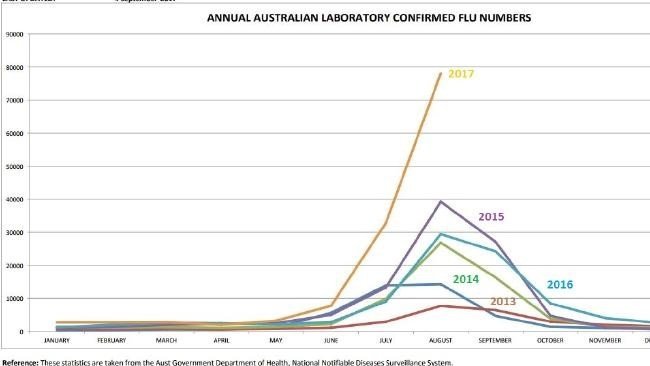
What should we expect this upcoming flu season?
An onslaught of a deadly and quickly mutating strain of the flu has affected the Southern Hemisphere as well as parts of Australia this year. Influenza A, caused by the H3N2 virus, is the flu subtype wreaking havoc on these areas, especially in Australia. The H3N2 virus triggers outbreaks of influenza A and B that circulate among individuals. Flu seasons are undeniably miserable when this virus dominates. Statistics from the Immunisation Coalition “show there was a 156% increase in confirmed cases of influenza in August this year when compared to the same time last year.”

In this case, the flu started earlier, lasted longer than usual, and affected all segments of the population, including those who were vaccinated.
North America had a considerably active flu season last year caused by H3N2 viruses. So the posing question is: did countries in the Southern Hemisphere follow the North American trend, or are we about to follow them? Dr. Kanta Subbarao, director of the World Health Organization’s influenza collaborating center in Australia, advises individuals in the Northern Hemisphere gearing up for flu season, “the bottom line is you should never say never with influenza…I’ve been in this business too long to fall into the trap of trying to predict.”
Individuals who contracted the flu virus last year are inherently less likely to fall prey to it again. Therefore, if another H3N2 virus is headed our way, the amount of illness North America experienced last year could lessen the severity of impact this flu season. The likelihood of this happening is plausible, as it does happen on occasion. Though often, the second or third wave of H3N2 has the potential to be worse than the season or seasons that proceeded it. Although, there is a possibility we could face a flu season dominated by the H1N1 viruses, which tend to cause less severe outbreaks. Or we could have a mixed season, with a variety of flu viruses affecting North America.
There is a lot of planning and procedure involved with making and distributing the flu vaccine, which is regularly updated to keep up with the ever-changing viruses. “The strain selection meeting for the Northern Hemisphere vaccine takes place every year in late February.” This year, two viruses were updated. The H3N2 component was incrementally updated rather than implementing a drastic change in hopes that component won’t be way off target. Dr. Subbarao claims that component of the vaccine will offer some protection, “but it won’t be optimal. Sometimes differences between the viruses in the shot and the circulating viruses are significant; in those years, lots of people who got vaccinated get sick anyway, and there are lots of headlines about flu shot mismatches.” Last winter’s flu shot contained the H3N2 component, which only provided moderate protection. “Studies in US and Canada estimated the H3N2 component of the vaccine reduced infection by 34 percent and 37 percent respectively.”
Vaccination is your best protection against the flu, but “don’t consider yourself invincible if you received the vaccine because there are signals to be concerned about in terms of the possible protection this season.” Even if you get the flu shot, it is important to conduct proper hygiene techniques to prevent the spread of disease.
To learn about more ways to prevent the flu, download our Fight the Flu eBook now.
{{cta(‘d6712145-59ad-46f8-997a-eb96e13a5780′,’justifycenter’)}}Sources: https://www.news.com.au/lifestyle/health/health-problems/the-biggest-mistakes-australians-are-making-in-the-influenza-outbreak/news-story/04f663dbe5dde7a7755f85bf8839d41d
https://www.statnews.com/2017/10/16/flu-virus-severity/
https://www.cdc.gov/flu/weekly/index.htm
